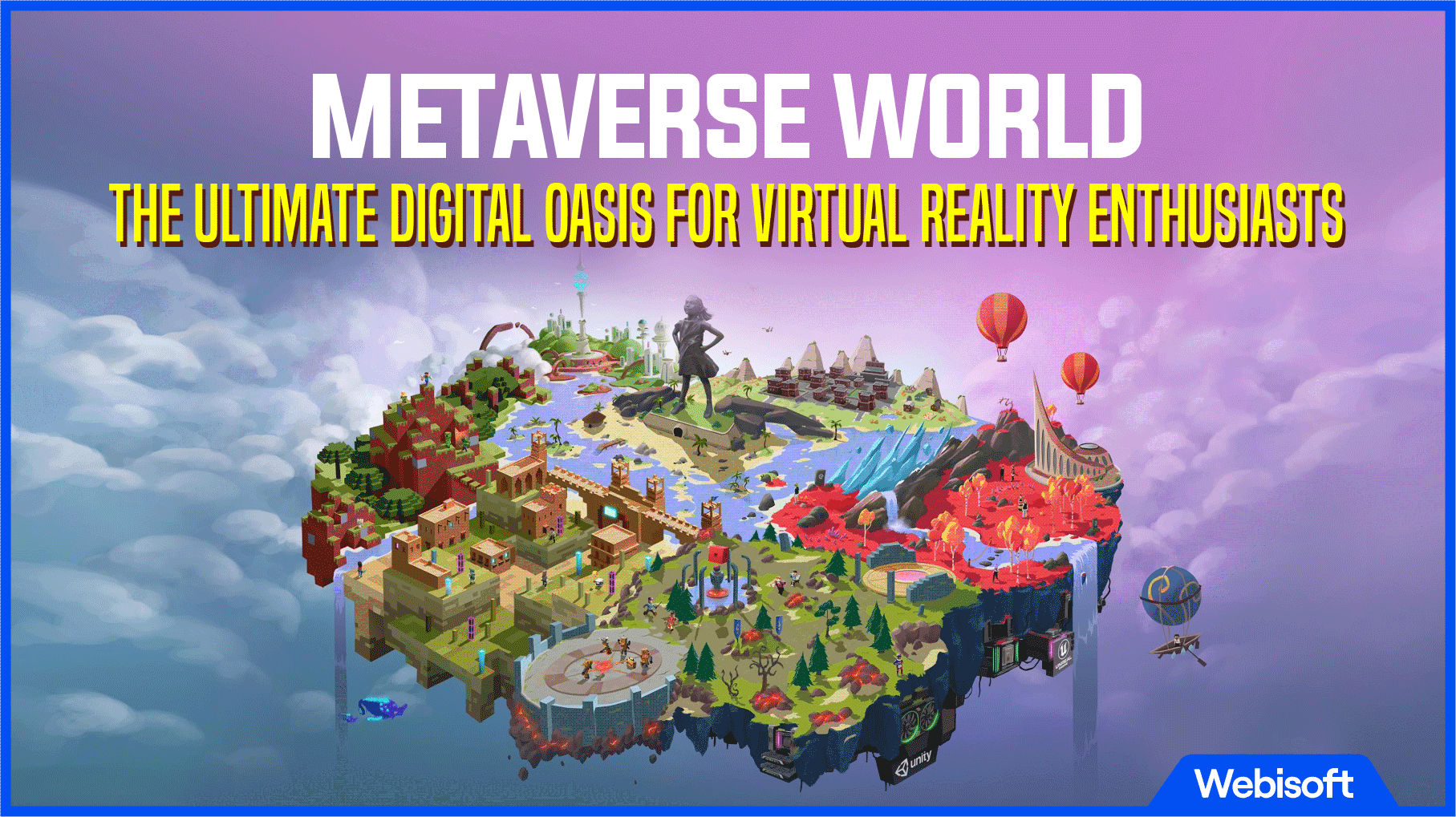Welcome to 2024: the year the Metaverse World steps boldly from the realms of imagination into our everyday reality. Gone are the days when the metaverse was a distant buzzword or a utopian ideal. Thanks to a dynamic fusion of science and technology, it’s no longer a concept but a tangible experience that’s set to revolutionize our lives.
At this year’s CES, we saw the metaverse, Web3, and gaming take center stage, catching the eye of global tech giants eager to shape this new parallel reality. And it’s not just industry insiders who are excited. According to Accenture, 55% of consumers are ready to dive into the metaverse, and a staggering 90% plan to do so this year.
So why the buzz? The metaverse promises to unlock a potential market value of a whopping $1 trillion in experiences and commerce by 2025. That’s right, the metaverse is not just ready to rock the world, it’s set to redefine it. Welcome to the dawn of the Metaverse World. Buckle up, it’s going to be an exhilarating ride!
Contents
- 1 What is Metaverse?
- 2 Understanding the Concept of Virtual Worlds and The Metaverse
- 3 How to Experience the Metaverse
- 4 How to Develop Animated VR for the Metaverse Virtual World
- 5 Let’s Build a Mobile Gaming Metaverse: What You Need to Know
- 6 The Top 4 Metaverse Worlds
- 7 How to Choose the Perfect Metaverse World: A Guide
- 8 A New Era in the Metaverse World: Let’s Talk Decentralization
- 8.1 Why the Metaverse Needs Standardization
- 8.1.1 A Strong, Decentralized Network
- 8.1.2 Interoperable Standards: Openness is Key
- 8.1.3 Harnessing Open Programming Languages
- 8.1.4 Extended Reality (XR): The Game Changer
- 8.1.5 Enter Blockchain and Smart Contracts
- 8.1.6 The Powerhouse: Computational Power
- 8.1.7 Immersive 3D Simulations: Realism at Its Best
- 8.1.8 Digital Payment Gateways: The Universal Cashier
- 8.1 Why the Metaverse Needs Standardization
- 9 The Metaverse World: A Peek into the Future
- 10 Wrapping Up
What is Metaverse?
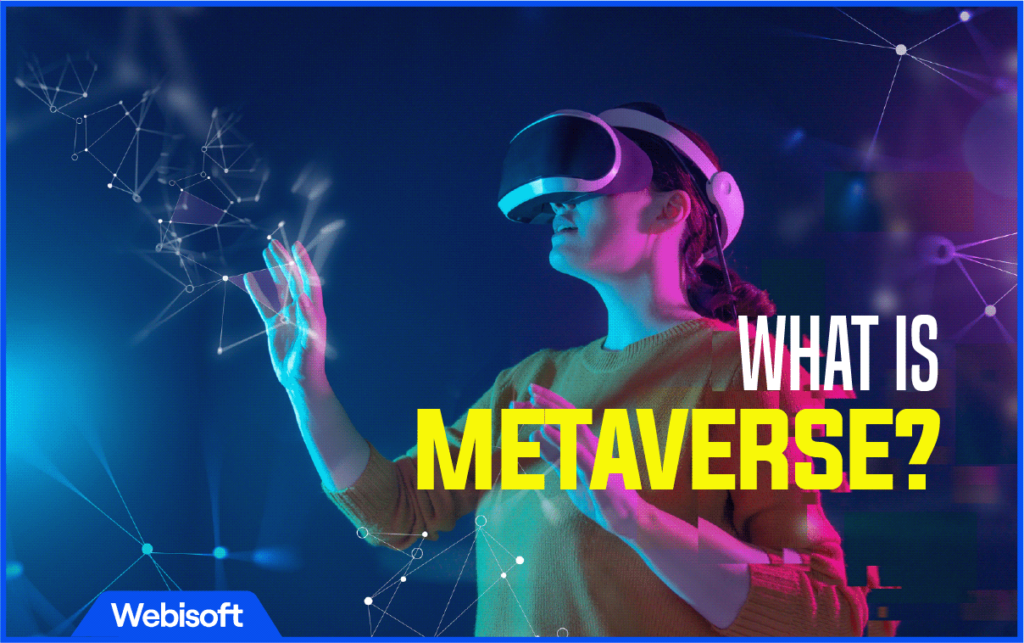
Hey there! The term Metaverse might sound like something straight out of a sci-fi movie, but it’s not. It’s all about shifting the way we engage with technology, and it’s all about blurring the lines between our physical world and the digital one.
It’s not limited to a single kind of technology, but involves a mix of various tech, including stuff like augmented reality (AR) and virtual reality (VR). It’s kind of like a collection of all sorts of virtual worlds that keep on going whether we’re logged in or not.
In this new Metaverse, we’ll see a whole new level of interconnectedness. Imagine being able to carry around your virtual belongings, say your swanky car or that cool jacket, from one virtual platform to another.
Today, your digital identity and all your virtual stuff are usually stuck on the platform you got them on. But in the Metaverse, you’ll be able to take your digital self and everything you own across different platforms, breaking the barriers that currently exist.
To really wrap your head around this whole Metaverse thing, it’s helpful to think about its key aspects:
- It Never Stops: Just like our physical world, the Metaverse keeps going. It doesn’t have a pause button, nor does it ever end or reset.
- Everything Happens in Real-Time: The Metaverse is a lively experience that’s always happening. It’s not just a place for spontaneous interactions, but also for events that are scheduled ahead of time, much like in our everyday lives.
- A Full-Fledged Economy: In the Metaverse, you’ll be able to create, buy, sell, and invest. Whether you’re an individual or a business, you’ll have opportunities to contribute value and get recognized and rewarded for it.
- Intersection of the Real and the Virtual: The Metaverse isn’t just about the digital world. It’s an experience that spans both the physical and digital dimensions, and it includes both private and public networks, and platforms that are both open and closed.
- Interoperability: The Metaverse will make it easy to transfer and use digital stuff across different platforms.
- A Place for Everyone to Contribute: The Metaverse is a space for content and experiences from a wide variety of contributors. This can include independent people, groups of friends, startups, and even large companies. Everyone gets to play a part.
Understanding the Concept of Virtual Worlds and The Metaverse
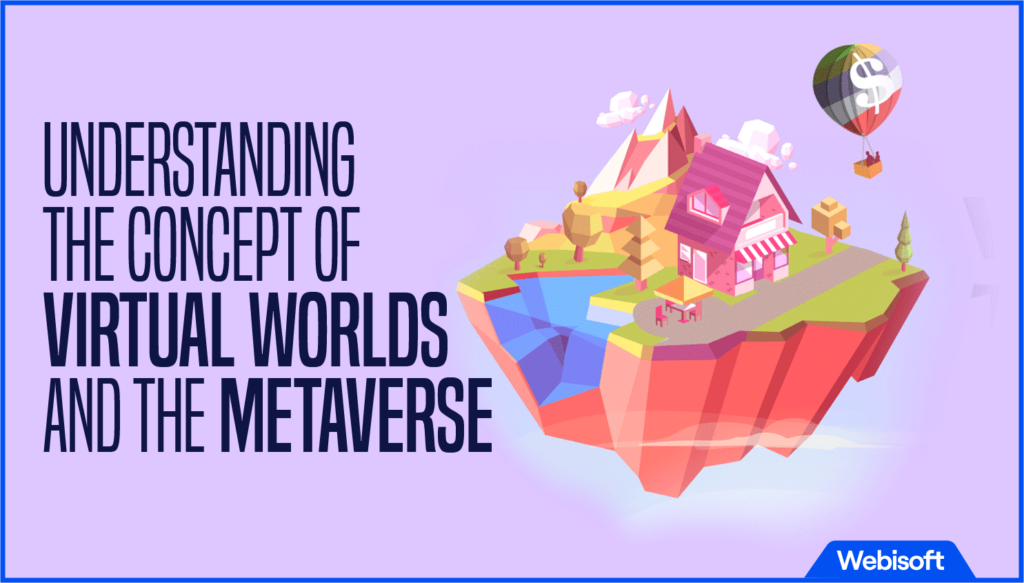
A virtual world is a digitally constructed environment, created and sustained through computer technology, and used by individuals for various online activities.
These worlds range from online video games to fully immersive virtual experiences, each offering a unique kind of digital reality separated from our physical existence. Essentially, any world existing online can be termed a virtual world.
However, a metaverse differentiates itself from an ordinary virtual world by incorporating aspects of digital ownership. By digital ownership, we mean the full rights of users over their digital identities, which can encompass avatars, virtual property, or even the communities they belong to.
Hence, the metaverse confers upon its users a kind of ownership that goes beyond what traditional virtual worlds offer.
Imagine purchasing a Non-Fungible Token (NFT) for your personal use or joining a Decentralized Autonomous Organization (DAO) that gives you control over a specific Intellectual Property (IP). The metaverse signifies the merging of our digital and physical realities, enhancing our digital immersion through ownership.
How to Experience the Metaverse
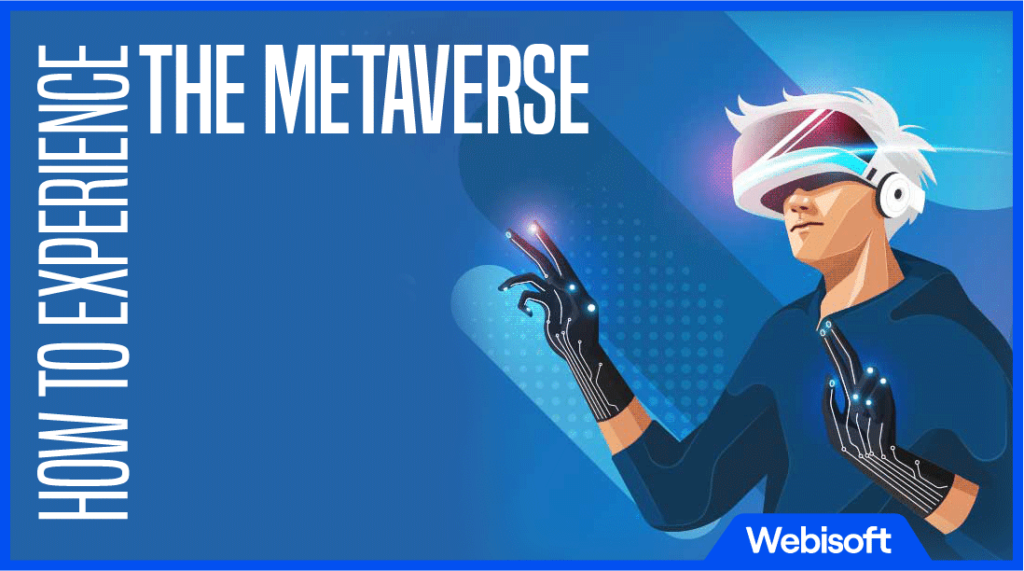
There are various ways to immerse oneself in the metaverse. Firstly, you can sign up for existing metaverses like The Sandbox, Decentraland, or Somnium Space.
Despite their differences, these platforms all offer the aforementioned elements of digital ownership. For instance, joining The Sandbox allows you to own LAND, acquire NFTs, and tailor your gaming experience.
Secondly, virtual reality (VR) headsets offer a more immersive experience. VR is predicted to be a major component of the future metaverse, with companies like Meta investing heavily in its development.
As we transition into the metaverse, VR will increasingly be utilized to enhance immersion. Affordable and user-friendly VR headsets, like the Oculus Quest 2, are a great way to get a sense of what the metaverse will offer.
How to Develop Animated VR for the Metaverse Virtual World
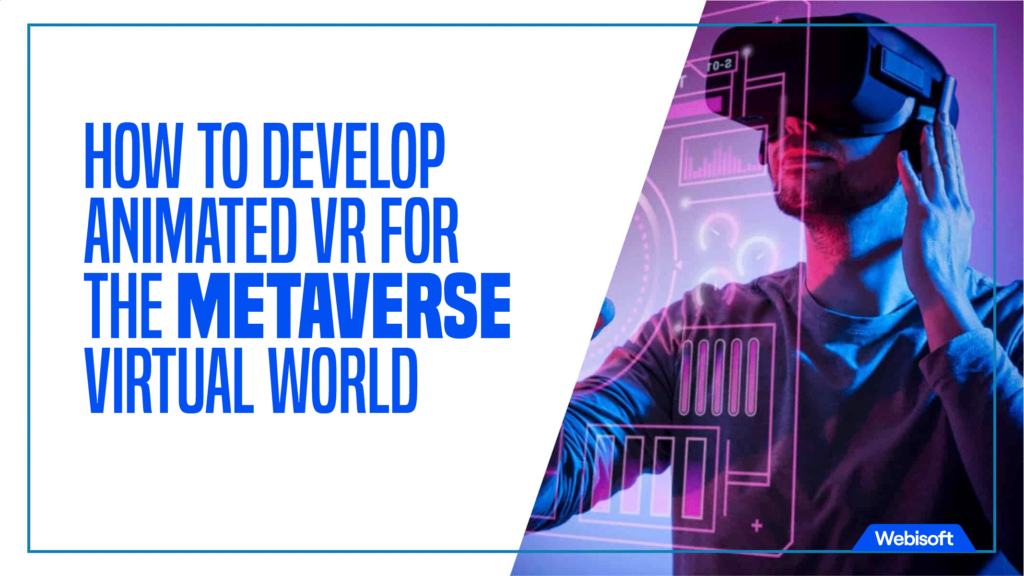
Now, you might not associate the internet with virtual reality right off the bat. But, the world wide web is actually one of the most versatile platforms out there! Imagine creating a VR app with JavaScript – you can run it on any VR system, how cool is that?
The Core Tech for VR Websites
To bring a VR website to life, we’ve got two trusty tools in our arsenal. There’s Aframe.io, a library that lets you cook up VR scenes using simple HTML and JavaScript. Then we have WebXR, a library brought to us by the folks at Mozilla that lets us interact directly with VR on the web.
If your graphics needs are a bit more advanced, then Three.js is your best bet.
Getting Started with AFrame.io
To start using Aframe.io, we have to add its codes via something called CDN servers. These servers make sure web content is delivered fast by bringing it closer to the users.
For instance, you can create a simple VR scene with the following HTML:
<script src="https://aframe.io/releases/1.2.0/aframe.min.js"></script>
</head>
<body>
<a-scene>
<a-sphere id = "ball" position="0 1.25 -5" radius="1.25" color="#EF2D5E">
<a-plane position="0 0 -4" rotation="-90 0 0" width="4" height="4" color="#7BC8A4">
<a-sky color="#ECECEC">
</a-scene>
</body>
</html>
Our VR scene is tucked neatly inside a <a-scene> tag. To add different shapes, we just include the relevant tags.
But here’s a catch. If we want to use a VR device, we can’t run VR on a static file. Instead, we need to serve an HTML file. To do this, you can set up an npm project with NodeJS. This will serve the HTML file like this:
const http = require('http')
const fs = require('fs')
const server = http.createServer((req, res) => {
res.writeHead(200, { 'content-type': 'text/html' })
fs.createReadStream('PUT THE NAME OF YOUR HTML FILE HERE').pipe(res)
})
server.listen(process.env.PORT || 3000)
Finally, you can manipulate the VR scene using JavaScript:
<script src="https://aframe.io/releases/1.2.0/aframe.min.js">
<script>
let sceneEl = document.querySelector('a-scene');
let dBalls = [] // Array of the balls we are about to create
let orbitalRadius = 1.2
let cycle = 0 // Track angular revolution of balls
...
</script>
Once you’re all set, you can try out your VR website using the WebXR API. You can do this on either Chrome or Firefox. After installing, head over to the WebXR tab while inspecting the page, and hit play on the emulated headset.
Let’s Build a Mobile Gaming Metaverse: What You Need to Know
The Metaverse is being hailed as the future of gaming, envisioning a network of interconnected virtual worlds. So, what do we need to keep in mind when building a mobile gaming Metaverse? Let’s dive in!
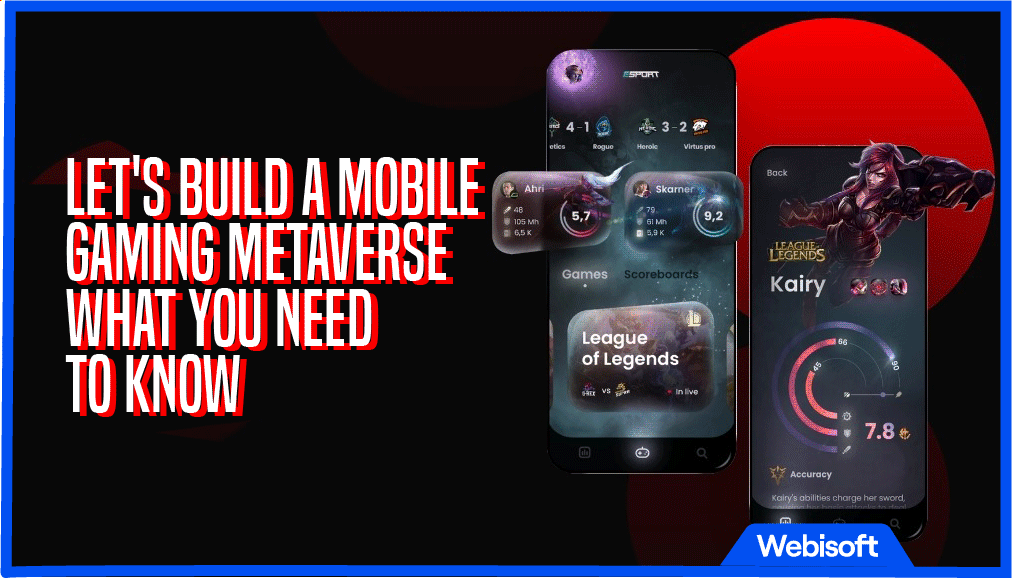
Get Ready to Dive in with Immersion
In the past, Virtual Reality (VR) was something you could only experience via a console, PC, or a special headset. That’s all changing now.
Big players like Oculus are pushing VR tech forward, allowing us to use our physical movements in VR and stepping away from being tied to a PC. Exciting times, right?
New Ways to Deliver Content and Infrastructure
Game streaming is the hot new thing, and it’s gaining steam. For example, Microsoft is on board with its Xbox cloud gaming that you can run on your mobile. It’s a big move towards making the Metaverse vision of smooth streaming on mobile devices a reality.
The Need for Open Standards
The Metaverse should be like the internet – built on open standards that link all virtual experiences. It shouldn’t be owned by just one entity. This way, everyone has a fair shot at contributing.
More Social Features are Coming Your Way
The mobile games of today are becoming more social. They’re incorporating features like guild mechanics and cooperative gameplay. Embracing these social features is key to creating a Metaverse that’s more connected.
A Decentralized Economy is the Way to Go
For the Metaverse to truly flourish, it needs a decentralized economy. New technologies like blockchain and decentralized finance could be the answers to establishing a global economy within the Metaverse.
It’s a different approach than centralized economies, where companies like Apple and Google keep a tight grip on their ecosystems and payment methods.
So, there you have it! That’s the roadmap to building our mobile gaming Metaverse. Let’s see where the journey takes us.
The Top 4 Metaverse Worlds
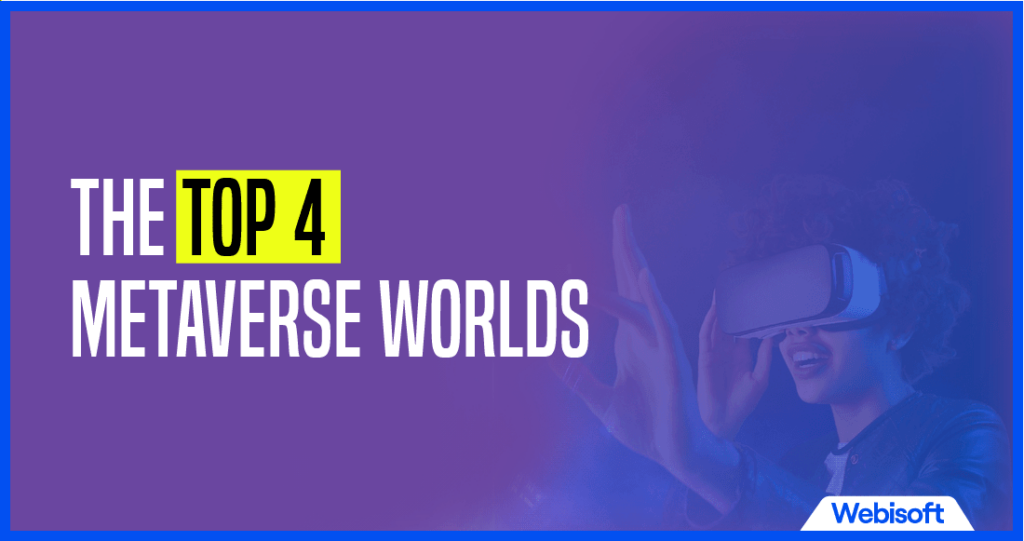
Several metaverse worlds offer unique virtual experiences. Here are four of the most popular:
The Sandbox
This is a community-driven metaverse that allows you to monetize VOXEL assets and gaming experiences through blockchain technology. The platform also enables you to buy NFTs and LAND, and create your VOXEL assets.
Collaborations with influential figures and entities in entertainment, such as Snoop Dog and HSBC, have propelled The Sandbox beyond just a game to a gateway into the metaverse.
Decentraland
Similar to The Sandbox in terms of digital asset ownership, Decentraland distinguishes itself through its emphasis on event curation and social interaction. It allows users to host parties, schedule podcasts, and even attend fashion shows, making it the preferred choice for metaverse events.
Somnium Space
This metaverse differs from others by being entirely virtual. Despite its limited decentralization, Somnium Space excels in terms of immersion and user experience, focusing on the latter rather than complex blockchain mechanics.
Horizon Worlds
This platform is Meta’s maiden venture into the metaverse. Despite some initial criticism, Horizon Worlds continues to evolve, pushing the boundaries of the metaverse experience. Future developments are anticipated as Meta’s Oculus technology improves.
How to Choose the Perfect Metaverse World: A Guide
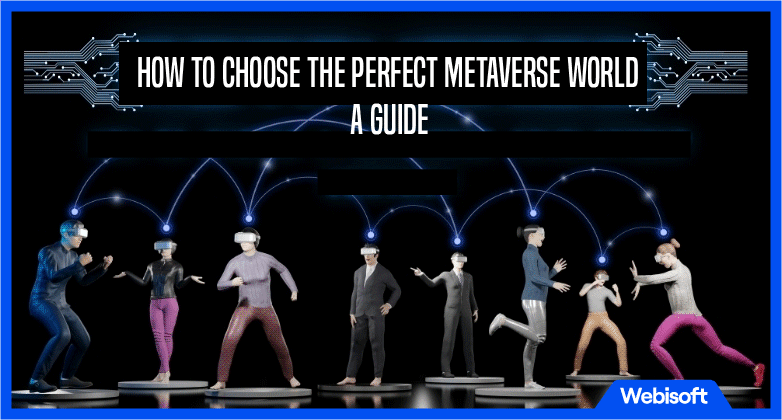
Taking your first step into the metaverse can feel a bit like venturing into a vast, uncharted universe – it’s massive, varied, and can feel a bit daunting due to the many choices out there.
The trick to finding the metaverse world that suits you best lies in pinning down what you’re looking for and matching those preferences with the unique features that different metaverse worlds offer.
And that’s exactly where we come in! At Webisoft, we’re not just about navigating the metaverse – we’re about helping you make the most of it.
We believe in finding the perfect match for every user, and in this guide, we’ll take you through the crucial factors you need to consider when choosing your ideal metaverse world. With our expertise and insights, we aim to transform your metaverse journey from overwhelming to exciting.
So, let’s dive right in!
1. Gaming Preferences
If you’re an avid gamer, then your gateway to the metaverse could well be a blockchain-powered game. The Sandbox, for instance, provides an integrated metaverse experience with a robust gaming component.
It offers community interactions, personal asset ownership, gameplay, and even LAND (virtual land) ownership. For those seeking a game-focused metaverse, The Sandbox stands out as an excellent choice.
2. Interest in Virtual Events
One of the unique selling points of the metaverse is its capacity for virtual events. These could range from online concerts to fashion shows to parties.
If your interest lies in these immersive, event-focused experiences, Decentraland is a stellar option. This metaverse is known for its vibrant event scene and can provide a fulfilling social experience.
3. Desire for VR Immersion
For those seeking a comprehensive Virtual Reality (VR) experience, metaverses like Somnium Space and Horizon Worlds are worthy contenders. These platforms offer full immersion, transporting users into meticulously crafted digital worlds.
If the appeal of donning a VR headset and diving into an alternate reality sounds thrilling, these metaverses should be on your shortlist. They are user-friendly, making them a good starting point for newcomers.
4. User Experience and Technical Skills
Choosing a metaverse isn’t just about what you want to do; it’s also about your ability to navigate the environment.
For novices, it might be wise to steer clear of metaverses with complex blockchain integrations, such as NFTs (Non-Fungible Tokens), DAO (Decentralized Autonomous Organizations), and cryptocurrencies.
On the other hand, if you’re tech-savvy and familiar with the blockchain world, you could consider platforms like The Sandbox and Decentraland. They allow you to enjoy the full benefits of blockchain utility.
5. Budget Considerations
The costs associated with participating in the metaverse can vary greatly. If you’re aiming for a high-end VR experience, be prepared to invest in a VR headset and potentially a powerful PC to support it. These can be quite pricey.
However, if budget constraints are a concern, consider exploring metaverses like The Sandbox and Decentraland. These platforms provide cost-effective experiences, reducing the financial barrier to entry.
6. Community Culture
The culture of the community within the metaverse is another significant factor. Each metaverse has its own ethos, shaped by the users who populate it.
Whether you’re looking for a community that’s gaming-centric, creative, professional, or casual, there’s likely a metaverse out there that matches your social preferences.
7. Opportunities for Creativity and Earning
Lastly, consider what opportunities for creativity and earning each metaverse offers. Some, like Decentraland, offer the opportunity to create and sell digital assets, while others, like The Sandbox allow you to design and monetize games.
Remember, the right metaverse for you is a personal decision based on your preferences, skillset, and budget. Take time to explore your options and make an informed choice. After all, you’re choosing a whole new world to dive into.
A New Era in the Metaverse World: Let’s Talk Decentralization
The Metaverse is more than just a buzzword. Imagine a universe of virtual realities, where digital and physical worlds blur, creating a unique cross-reality environment.
What’s central to building such a universe? It’s the concept of decentralization. Decentralization ensures that no single entity has complete control over the Metaverse. It’s like living in a world without borders or governance from a single organization.
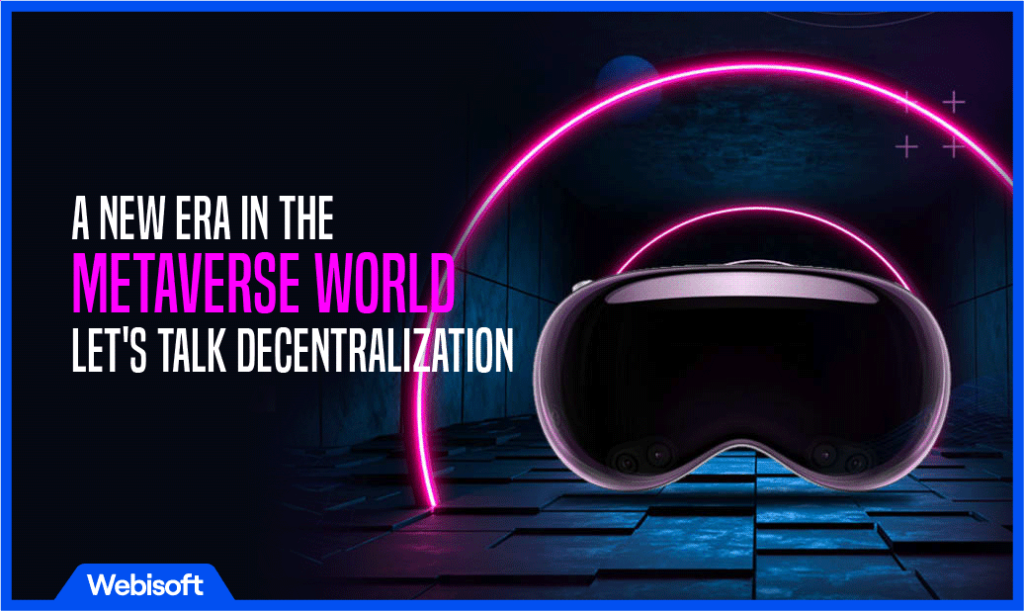
Why the Metaverse Needs Standardization
Just like our regular internet, the Metaverse needs a set of standards for seamless interactions. Standards help different elements talk to each other in a common language.
Standardization in the Metaverse would mean that data transmission, communications, graphics – you name it – can flow smoothly across various platforms and elements. We need to up this level of standardization a notch for the Metaverse to function seamlessly.
A Strong, Decentralized Network
In the Metaverse, the network must ensure a smooth and real-time flow of data, but without being controlled by a single entity. This network should be distributed across multiple computers, giving everyone equal opportunity to host, share and interact in the Metaverse.
Interoperable Standards: Openness is Key
In a digital world as diverse as the Metaverse, standards for media handling need to be broad-based and flexible. They should be capable of supporting multiple formats – from text and images to videos and 3D scenes. The focus is on keeping things accessible and open to all.
Harnessing Open Programming Languages
Open programming languages would play a pivotal role in the creation and maintenance of the Metaverse. Languages like HTML, JavaScript, WebXR, WebAssembly, and others would ensure that different elements in the Metaverse can interact and work together seamlessly, irrespective of their platforms.
Extended Reality (XR): The Game Changer
XR technologies would be at the core of the Metaverse, creating a world that combines real and virtual environments.
With XR, you could interact with the digital world through devices like VR headsets, smart glasses, and more, for a completely immersive experience.
Enter Blockchain and Smart Contracts
For a decentralized Metaverse, transparency and security in transactions are crucial. Blockchain technology and smart contracts can provide this assurance. They ensure that transactions within the Metaverse are frictionless and secure, enhancing user trust and comfort.
The Powerhouse: Computational Power
Building and maintaining a world as expansive and interactive as the Metaverse would require serious computational power. It needs to handle massive amounts of data processing, run artificial intelligence algorithms, create projections, and much more, all in real-time.
Immersive 3D Simulations: Realism at Its Best
For an engaging user experience, the Metaverse should host immersive 3D simulations that mimic real-world environments and ecosystems.
This could mean creating a virtual beach that looks, sounds, and even feels like a real beach, providing users with a more realistic and engaging experience.
Digital Payment Gateways: The Universal Cashier
The Metaverse would host a variety of activities, many of which would involve transactions.
To handle this, the Metaverse would require digital payment gateways capable of supporting different types of currencies, from traditional ones like dollars and euros to digital cryptocurrencies. This makes transactions within the Metaverse quick, easy, and secure.
The Metaverse World: A Peek into the Future
There’s a whole world of possibilities waiting for us in the Metaverse. Curious to know more? Let’s dive in!
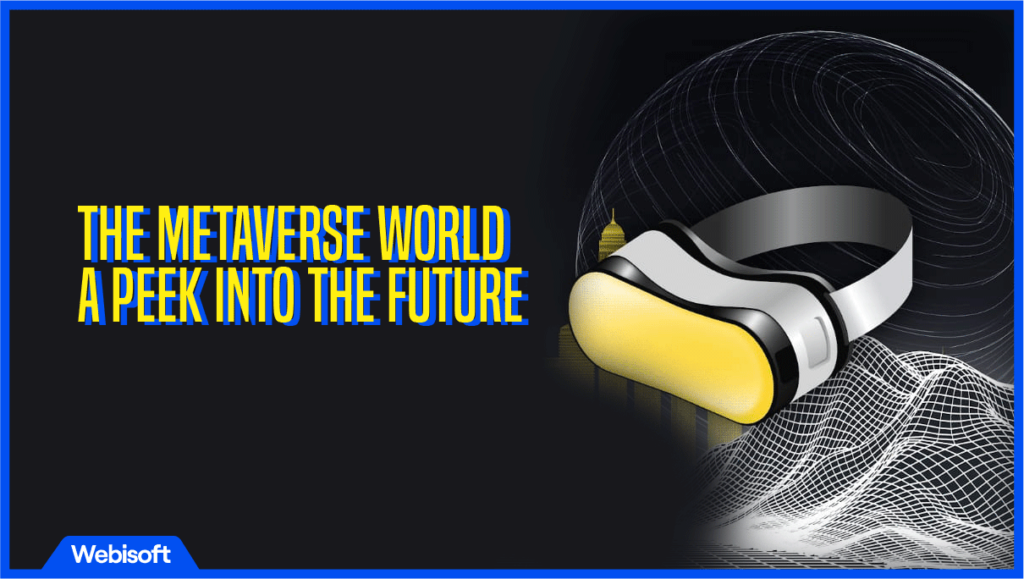
A New Kind of Economy and Safer Transactions
The Metaverse is set to give the digital economy a major facelift. With the magic of blockchain technology, users can make safe transactions directly with each other, without the need for traditional middlemen like banks.
Imagine being able to buy in-game items, trade virtual property, or make any other digital asset transactions.
But the cool thing is, it’s not just confined to the virtual world. These transactions can also reflect and impact real-world economies, as the value of virtual goods and assets becomes recognized in mainstream markets.
Owning Your Digital Assets
In the Metaverse, owning digital assets, like your avatars or a piece of virtual land, takes on a whole new meaning.
Unlike traditional video games where your assets or achievements stay within that game, the Metaverse lets you tokenize your assets as non-fungible tokens (NFTs). This means they hold real-world value and can be bought, sold, or traded in the open market.
So, you could invest in virtual real estate, create and sell unique avatars, or even kick-start digital businesses. Cool, right?
Socializing and Hosting Events in the Virtual World
The Metaverse isn’t just about transactions and digital assets. It also offers a place for us to socialize on a large scale. You could host any event from birthday parties to concerts or conferences in the Metaverse.
And the best part? There are no geographical limits. This could mean more connectivity and interaction with people from all around the globe.
A Canvas for Artists and Creators
If you’re an artist or a creator, the Metaverse could be your next big stage. Musicians could host virtual concerts, artists could start digital art galleries, and designers could create and sell unique avatar accessories.
Plus, with blockchain technology in the mix, artists can get fair compensation for their work. They can earn crypto tokens from their performances or sales, which they can then exchange for goods or services in the real world, effectively making the most of the digital market.
Contributions to Global Economy
The growth of the Metaverse could have significant implications for the global economy. As it becomes increasingly integrated into our everyday lives, the economic activity generated within it could become a substantial contributor to global GDP.
The digital economy of the Metaverse, with its own forms of production, exchange, and consumption, could exist in parallel with traditional physical economies, interacting and influencing each other in dynamic ways.
Wrapping Up
Lately, the Metaverse has been the talk of the town, catching the eye of big tech players and new startups alike. Why? Well, it’s mainly because it has the potential to bring people from the real world together in a virtual setting.
The Metaverse is expected to create some serious waves in society, offering countless opportunities and fresh platforms for both startups and bigger enterprises.
So, whether you’re looking to fine-tune a blockchain Metaverse project or planning to build one from scratch, having the right folks by your side can make all the difference. Our Metaverse specialists are always here to chat about your vision and what might be possible, so don’t hesitate to reach out.
That’s the Metaverse in a nutshell. Ready to dive in?
